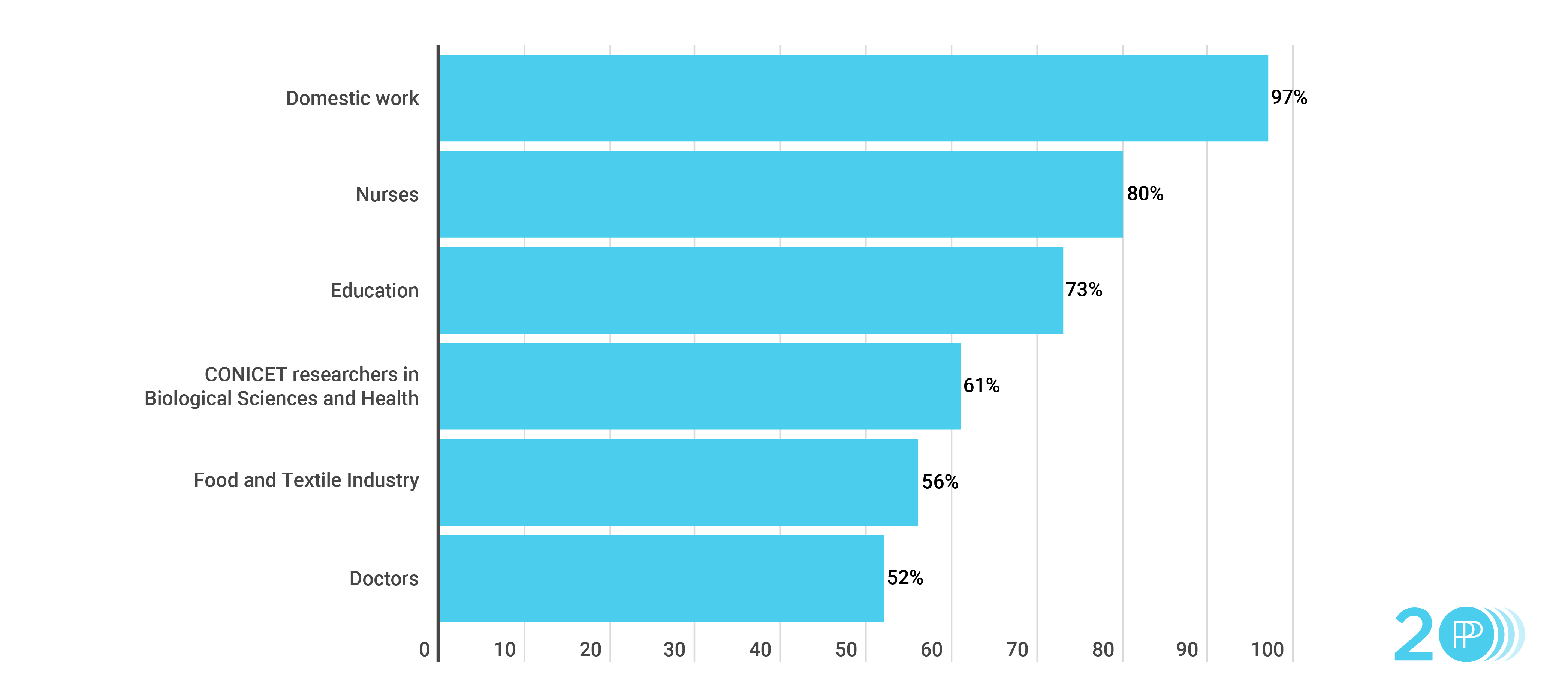Published on March 20
In a moment of short-lived lucidity, Daenarys Targaryen decides to accompany Jon Snow to defeat the King of the Night, upon the realization that the quarrels for the Iron Throne were frivolous in the face of the emergence of a greater threat.
The progress of COVID-19 is forcing us to postpone daily discussions on public policy. As evidenced in Argentina, the virus does not recognize jurisdictions or areas of competition, and our governments are demonstrating astonishing political maturity in their joint approach..
However, the pandemic also exposes society’s unresolved problems. The risk is that exceptional measurements may result in a patchwork of new fabric in an old dress. The situation spotlights an opportunity to combat the inequalities that occur all around us.
The paradigmatic case is gender inequality. Preliminary data shows that the mortality rate is higher among males than among women, hypothetically as a result of gender differences in the immune systems or due to differential patterns of tobacco use. However, the social implications of both the pandemic and policy responses clearly disadvantage women. This is for several reasons.
First, the labor sectors facing the highest number of cases are highly feminized. Medical professionals, cleaning staff and biological research profiles show an overrepresentation of women, who are exposed to contagion, work extended and strenuous days, and not always have all critical inputs available. This is a global phenomenon that is also mirrored in Argentina.
Feminization percentage per sector of most-affected activities
Source: (*) Federal Network for Registry of Health Professionals (2016); (**) Permanent Household Survey, 3rd trimester 2019 (INDEC – National Institute of Statistics and Census): (***) CONICET – National Scientific and Technical Research Council, 2018
Second, the possibility of complying with social isolation is very remote for those immersed in the informal sector of the economy. In Argentina, only 50% of workers have access to paid maternity or paternity leave, and informal and self-employed workers are excluded. For these workers, social isolation implies the loss of substantial income. Informality has a bigger impact on women, so they are more exposed to these social protection deficits. The most illustrative case is domestic employment: of the nearly 900,000 private home workers, 98% are women and 75% are informal. Domestic workers find themselves in the disjunction (often decided by their employers) between continuing to work—and becoming the agent of the virus—or losing pay.
Third, measures to address the pandemic also have gender differential consequences. Suspension of classes and reduced circulation directly impacts the burden of care faced by families. Inside the households, this additional work falls almost exclusively on women, as a result of an implicit gender pact that violates their economic autonomy. Years ago, border research indicated that the gender revolution will remain stagnant if males do not join through greater participation in care-taking sectors—one with connotations of traditionally “female” work.
Finally, we must take into account the unintentional consequences of social isolation that we learnt in previous epidemics. There is evidence that the outbreak of Ebola in Africa increased the incidence of teenage pregnancies and also the likelihood of disruption of educational trajectories in women. Restrictions on sexual and reproductive health services and the naturalization of women as caregivers can have an impact on social insertion even when the spread of COVID-19 subsides as a global threat.
The recommendations proposed in Gender of Work,, CIPPEC’s flagship publication on gender economic equality, are more pressing than ever. The storm we’re going through makes our structures wobble, but it also helps us identify where we’re going to need to make arrangements once the sun comes up.


